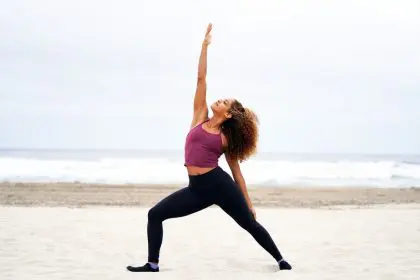Scrolling through fitness advice online feels like navigating a minefield of contradictory information and outdated beliefs that just won’t disappear. You’re probably following workout rules that made sense decades ago but have been thoroughly debunked by modern science. These persistent fitness myths aren’t just annoying – they’re actively sabotaging your progress and making your fitness journey way harder than it needs to be.
The fitness industry loves recycling old ideas because they sound simple and appealing. Unfortunately, simple doesn’t always mean accurate, and these zombie myths keep shambling through gyms and social media feeds, confusing people who just want to get healthier and stronger.
Breaking free from these misconceptions can actually revolutionize your approach to fitness and help you see results you’ve been chasing for months or even years. It’s time to separate fact from fiction and finally put these stubborn myths to rest.
The spot reduction fantasy needs to die
You cannot do endless crunches to melt belly fat or countless arm circles to banish underarm jiggle. Your body doesn’t work like a targeted eraser that removes fat from whatever area you’re exercising. Fat loss happens systemically throughout your entire body based on genetics, hormones, and overall calorie balance.
Those Instagram workouts promising to eliminate your muffin top or slim your thighs are selling you a beautiful lie. Your body decides where it wants to store and release fat, and no amount of focused exercises can override this biological programming. You might build muscle in targeted areas, which can improve how those areas look, but the fat on top follows its own rules.
This myth causes people to waste enormous amounts of time doing repetitive, boring exercises that don’t actually address their goals. Instead of doing 500 crunches hoping for abs, you’d see better results from compound movements and managing your overall diet.
Lifting heavy won’t turn you into a bodybuilder overnight
Women especially get fed this ridiculous line that touching anything heavier than five-pound weights will instantly transform them into muscle-bound hulks. Building significant muscle mass requires specific training protocols, precise nutrition, consistent effort over years, and often favorable genetics.
Most people, regardless of gender, will never accidentally become too muscular. It’s like worrying about accidentally becoming a professional pianist by practicing scales. The physiological and lifestyle requirements for extreme muscle growth are so demanding that it simply doesn’t happen by accident.
Heavy lifting actually helps create the lean, toned look most people are seeking. Light weights with high repetitions might make you feel like you’re working hard, but they won’t create the muscle definition or strength gains that heavier loads provide.
Cardio isn’t the holy grail of fat loss
The idea that you need to spend hours on cardio machines to lose weight has probably wasted more time and energy than any other fitness myth. While cardio certainly burns calories during exercise, it doesn’t create the metabolic boost or body composition changes that strength training provides.
Your body adapts quickly to steady-state cardio, becoming more efficient and burning fewer calories for the same amount of work. Plus, excessive cardio can actually work against your goals by breaking down muscle tissue, which lowers your metabolic rate.
Strength training builds muscle that continues burning calories even when you’re sitting on the couch watching Netflix. This metabolic advantage lasts for hours after your workout ends, unlike the temporary calorie burn from cardio.
Your muscles don’t need daily punishment
The “no pain, no gain” mentality has convinced people that they should feel destroyed after every workout and exercise every single day. This approach typically leads to burnout, injury, or both. Your muscles actually grow and strengthen during recovery periods, not during the workouts themselves.
Exercise creates tiny tears in muscle fibers, and the repair process is what makes you stronger. Without adequate recovery time, you’re just creating more damage without allowing the beneficial adaptations to occur. This is why people often feel stuck in their progress despite working out constantly.
Rest days aren’t signs of weakness – they’re strategic tools for better results. Your body needs time to repair, rebuild, and adapt to the stress you’ve placed on it during exercise.
Morning workouts aren’t magic
Social media loves promoting 5 AM workout sessions as the secret to success, but the best time to exercise is whenever you can do it consistently. Your body doesn’t care what time the clock shows when you’re lifting weights or doing cardio.
Some people genuinely feel better exercising in the morning, while others perform better later in the day when their body temperature is higher and their joints are more mobile. The key is finding a schedule that works with your life and preferences.
Forcing yourself to wake up at dawn for workouts you dread is a recipe for giving up entirely. Consistency matters infinitely more than timing, so choose workout times that you can realistically maintain long-term rather than chasing some arbitrary ideal schedule that doesn’t fit your life.















